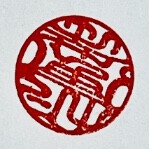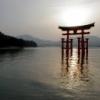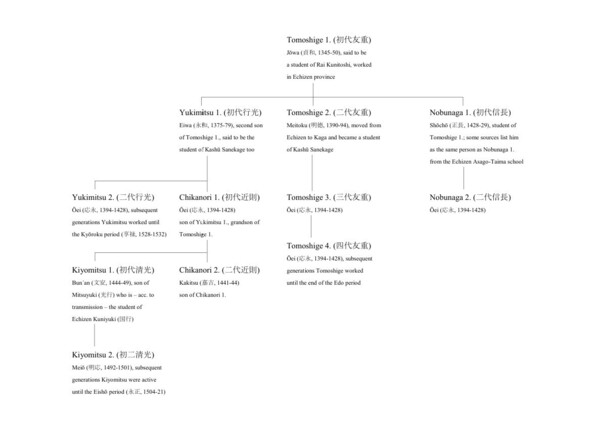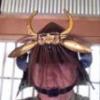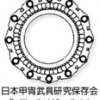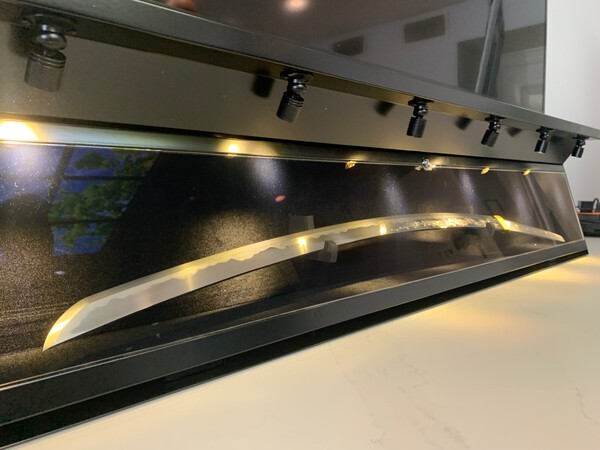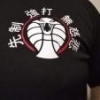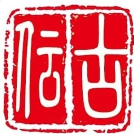Leaderboard
Popular Content
Showing content with the highest reputation on 06/17/2025 in all areas
-
Here's what you tend to do Dan. You throw out some vague theory on a random tsuba, you make some unwarranted claim. Then when people dispute it and don't agree, you go "Well, prove I'm wrong. Unless we send it for testing, I guess we'll never know" and claim the "mystery" is unsolved. Except there is no mystery, aside from your throwing out a theory on that particular tsuba. No-one sees a cast tsuba there. But because you make a claim, it's up to us to prove it wrong? Simple fact...anything that can be done, will have been done at some point by someone. That's why you find swords with bizarre shapes and styles sometimes. There are always smiths who want to play with something new. No doubt there is someone or some small group out there that wanted to see if they could cast tsuba way back. However, using that as proof that cast tsuba were routinely done way back hundreds of years, and that the Japanese just mysteriously forgot to document it in their thousands of books is naive at best. We have books and manuscripts and documents from hundreds of years ago. You think they all got together to invent a conspiracy and hide the info? But you've gone beyond simply trying to find proof of cast tsuba. Now you just take random items posted by people, see what you want, and start a discussion around how that proves your theory. Forgetting that the item itself hasn't been determined to be cast, you act like it has been, and then proceed to use it as proof of your theory. The West isn't going to make some brand new discovery around Nihonto that the Japanese themselves haven't already investigated decades ago. But I think you're determined to somehow "leave your mark" and make some revelation that no-one else thought of. Throwing out theories about posted pics isn't going to do that. And it confuses the heck out of newcomers who come here to learn established facts.7 points
-
6 points
-
Hello everybody, New to the forum, allow me to introduce myself. Born in 1953, a Year of the Snake, I studied in Japan from 1985 till 1987, while practising kendō. A lifelong interest in Nihonshi and classic Japanese is the result, with a special interest in nihontō and katchū. After retiring from civil service in 2013, time has come to extend my modest collection and knowledge of nihontō. Glad to be here, Pierre4 points
-
Another great event and certainly exceeded last years, both in terms of number of dealers (several new faces in the booths from Japan and Australia) and range of blades, with a little more emphasis on Koto. Many Juyo papered blades were available for sale too. There was a booth demonstrating urushi polishing and a separate room featuring the work of a calligrapher. Yes, I would agree a few more lectures covering a wider variety of Japanese culture would encourage greater attendance by the lay person. Maybe a tea ceremony demo would be a nice idea. Its a shame the event is poorly attended by the NBTHK-EB members. The more support it gets the more likely it is to continue. Europe sorely needs the Japan Art Fair. Congrats to Henk and Daisuke san for organizing this annual 3 day expo which seems to grow in strength with increasing years. I plan to be there next year too. Did anyone get their blade(s) shinsa'ed on the Sunday? How did that go?4 points
-
Dan, I think the main issue is that we're all going in circles. As Curran mentioned, some people have been involved in this hobby for decades. So while you say people aren’t open to new ideas, this particular idea really isn’t new at all. I also don’t think it’s fair or helpful to accuse Tsuba sellers of being part of some kind of casting conspiracy. The kind of reference you're hoping for simply doesn’t exist. You can’t reliably date a Tsuba just by looking at pictures. If I post an example of hand forging, you might point to any small flaw and say it’s proof of casting. If you post an example that does show casting, we can’t date it with certainty. So after 20 pages of discussion, where does that leave us? I’m not sure where I’m going with this. You're clearly committed to your search, and maybe there are ways to gather real data to support your ideas. But I doubt you’ll find that information hiding online; it would probably take actual hands-on research and analysis like others have mentioned. Even though I’ve had my share of frustrations with this topic, I do admire your passion... -Sam4 points
-
Took it to the 50m range today using what components I had at hand. .450" lead round ball Doubled up .34mm patches, the outer one greased. Guestimated load of 50gr Swiss 2 BP (FFFg) Once I figured out the average point of aim it was reasonably easy to hold the black. Certainly accurate enough to pick a specific target out of a crowd. Once the match is burning well the lock is very fast and reliable. Recoil is a short tug on the cheek, not painful at all. Next I shall seek out slightly larger musket balls so that I can just use one patch. The powder load seems about right for 50m and may switch to a coarser grain.4 points
-
Dear All. So a birthday road trip with my lovely wife and she starts asking me about swords. Out of nowhere the question, 'When did shirasaya start being used?' Looong silence.......until I realised I had no idea and had never read anything about this. Any ideas folks? All the best.3 points
-
Proving that some incredible swords can carry just the Bishu Osafune Sukesada signature. Here is mine in the same signature + date 1567 - some incredible utsuri in sashikomi polish Length: 71.5cm Curve: 2.5cm Width moto-haba: 3.22cm Thickness moto-kasane: 0.77cm Width saki-haba: 2.55cm Thickness saki-kasane: 0.60cm3 points
-
My thoughts on these questions: Luc's talk on the evolution of the kabuto was an excellent concise and reasoned overview in the time allowed. The same goes for Simone's talk on the history of the Gassan school, both excellent and very interesting talks. As for the positioning of the blade, a picture says it all: All in all, a fantastic and very enjoyable happening, with a Tokubetsu Iga no Kami Fujiwara Sadatsugu keeping me company on the way home! Pierre3 points
-
I understand you very well Benjamin , I was amazed thinking about how much effort is needed to create a blade of such magnitude. Also it would be nice to be able to organize a meeting/lunch/dinner with NMB members next year by organizing it in advance.3 points
-
I add also had a great experience at Japan Art Fair, the three days wasn't too much to enjoy blades and people. I regret not having met our german fellows but I was caught up by time. I want to especially thanks the sellers for their kindness and availability, always ready to present theirs items. And of course a great thanks to the organizers. Giordy, I dreamed of this giant Ayanakoji friday night, very impressive and beautiful blade. By the way I didn't Shinsa'ed anything so can't express. I will come back next year. Can't say it better3 points
-
This is something I have always argued, no one is testing antique swords, and even wazamono grading was only done on relatively recent swords, not so much the older koto stuff. People on here and various other sites love to argue all day about what the best sword making tradition is, or who made the best blades, but lets face it, no one on here or elsewhere who is alive can determine anymore than what they themselves think is the best based off subjective views on artistic value, balance, and maybe how it feels to swing around. Anyways I am partial towards gendaito, shinshinto, and shinto swords if that means anything, but that is mainly because those pieces tend to be in a condition which is closest to how they would have looked when originally forged, Very few koto pieces survive in a state that has not seen dozens of polishes or multiple kissaki reshaping efforts, so having any sort of objective evaluation on the durability or performance of these swords is iffy at best.3 points
-
3 points
-
I sent an inquiry to someone I think will have this answer to this. A good question! I’ll update if he gets back to me. -Sam2 points
-
Yes ! Both very good blades and different feelings. Men have great taste. Best Eric2 points
-
R.P. You have and present an interesting sword that appears to reflect - at least - some recent history of sword assessment and kantei. On the surface it appears certainly to be a well made, highly regarded blade with formal attribution to a serious early Shinto smith. Nidai Kunikane was the son of the Shodai master and he made very good blades. I'll dig out some specific later, but for now all we need to know is that he learned, mastered, and presented the techniques his father resurrected of the Yamato tradition, good masame, no turnback on the kissaki, and nice full niku . But, those techniques were subsequently past on the the following 12 generations so the picture gets complex. And somebody(???) put his name on lots of those swords. Thus, getting paper for his signed swords is tough... trust me ! Add to all of that, this sword carries an old "green paper" that also has a complex history. Bottom line, this probably is a VERY good sword that deserves appreciation. I'd like to see the saya-gaki, too, please. Peter2 points
-
woah some seriously nice blades here, loving the hamons. happy hunting2 points
-
I bought an item from Touken Takarado at Japan Art Fair. I wanted to share my great experience. They were as friendly as professional. Their inventory was very interesting with a wide proposition from koto to very young blades, always qualitative. Highly recommended!2 points
-
2 points
-
Visited for the first time, beautiful event in an equally beautiful and exclusive location, very helpful and friendly dealers, I sincerely hope that this event will be maintained because we desperately need it in Europe, hope that the dealers have also done good business because in the end a lot also depends on this. I see the format itself as centered but in a growth perspective it would be interesting to integrate more laboratories / lectures also in general on Japanese culture that can attract a more varied audience. The blade posted by Luc is a Gassan Sadanobu was exhibited together with 3 other Gassan including an Sadakazu Odachi for the very interesting lecture held by Simone di Franco on the Gassan school, obviously magnificent horimono as per Gassan tradition. Regarding possible purchases the offer was varied with both entry level and high level pieces, especially for entry level I saw several interesting pieces compared to the asking price so I strongly suggest to those who are thinking about their first purchase to come to the next edition. @Jussi Ekholm I thought of you when I saw this , never seen so many ana.. PS: sorry for the low quality photos but I didn't want to be too annoying towards the dealers... Giordy2 points
-
I don't see any tradition in Mino-Den that is qualitatively inferior to the other 4 traditions. Since Mino-Den has its roots in the Nanbokucho, but only really defined itself in the middle Muromachi, it is difficult to compare it with Yamashiro or Bizen. The emergence of the individual gokads is based on certain cultural, economic and political backgrounds and are products of their time. They are reflected in the stereotypical demands of the clientele, such as Yamashiro = court nobility, Bizen = warrior nobility, Yamato = the Buddhist monasteries' claim to worldly power. All three of these social pillars were also the largest landowners in the Kamakura period. (Although originally only the tenno owned land. But the tide was already turning in the middle of the Heian period to the disadvantage of the imperial court). But these shifts in power are the reason for the emergence of traditions such as Bizen and Yamato. The emergence of the Mino is a reaction to an impending conflict between Go-Daigo and the supporting warrior clans against the Kamakura Bakufu (Kemmu Restoration) and an immediately following “counter-revolution” by Ashikaga Takauji, which led to the Nanbokucho conflict. Who knows, if the Southern Court had gone somewhere else, and another province had proved to be more strategically ideal, there might have been an Ettchu-Den, or Echizen-Den. Shinto itself is a renaissance of existing gokaden, especially the soshu-den. The cultural epicenter of Kyoto is crucial for this, as is the fact that the soshu-den was particularly popular under Toyotomi Hideyoshi and the Honami. This renaissance began in the Momoyama period. Renaissances of certain styles had already occurred before: Bungo Takada copied Bizen and Aoe, the Chikuzen Nobukuni Bizen, Kanabo, as a true Yamato blacksmith, worked more in the Bizen style, etc. However, during the Momoyama period, Kyoto was the benchmark in all areas of art and crafts, such as fashion, painting, ceramics, literature, tea ceremony, but also kodogu and swords. Some lords sent their swordsmiths directly to Kyoto (Horikawa, Mishina), while others were satisfied with their Smiths learning from the students of the Horikawa or Mishina masters. For others, it was enough that their swordsmiths at least drew inspiration and jumped on the stylistic bandwagon. What is truly typical of Shinto, the "standardization of characteristics" already mentioned here—the development of Shinto tokuden—only appears in the following generation of swordsmiths. A notable difference between shodai and nidai is often a much denser kitae. Kunisada and Kunisuke, for example, were a link in this effect. They are actually considered Horikawa students, but they were too young for that; they were more likely students of Horikawa Kunitomo. The hada of their blades soon no longer exhibited typical Horikawa characteristics. But the same applies to the following generations of Mishina smiths. The Momoyama-Periode-smith, Wakasa kami Ujifusa, often still displays an extremely Minoesque hada with plenty of nagare. His son, Hida Kami, already knits his hada much more tightly. And Sandai Bizen kami, with his ko-itame, is fully in line with the trend of the High Shinto period. From the Kanbun period onwards, one can find a dense ko-itame in Kyoto, Osaka, Edo, Owari, Echizen, and so on, as well as a hamon that is essentially based on Nie.2 points
-
The position of the signature is interesting. I think the blade is much older. Since I am more closely involved with Mino-Den, I can at least say that this peculiarity of positioning Mei over the Nakago-Ana in Mino at Uchigatana is more common in the second half of the 15th century. I once owned a katate uchigatana with this feature and a date from the Bunmei era (1469-87).2 points
-
2 points
-
Dan, you are being dishonest here, and I am being polite. The very first photo in the "Silver ring in tsubas" (https://www.militaria.co.za/nmb/topic/52786-silver-ring-in-tsubas/#comment-551308) is taken at an angle, and there is nothing in the surface roughness indicating casting, rather it is a look one could easily obtain during forging. My opinion is corroborated with more than 10 years working in research in mechanical and metallurgical engineering, reading actual academic research on the topic of tsuba (as well as period documents, when possible), and trying my hand at the different DOCUMENTED techniques of tsuba making. And if you are looking through my commenting history, you would see the links or references I have posted (I am even the one who posted the research report for the archeological find of cast soft metal tsuba in Nara). If anything, I always try to give a reference to support my opinion. Do it then. Find one of these supposed antique cast iron tsuba, and have the tests made. Or send them to me to do it. I have access to X-ray, electronic microscope with chemical analysis, and micro-hardness (not quite non-invasive, but still considered relatively non-destructive, if you can bear a barely visible indent). Put your money where your mouth is and do the analysis, instead of telling others that they are close-minded and scared, then taking offense at being called out. I am doing it. I had an idea about tsuba research, and my students and I are doing the calculations and experiments to see it through. It's not cutting edge, it's probably not very noteworthy, but we are doing what's necessary to find out if we are right or not.2 points
-
Hi Jackson, Unfortunately I don't know about the painting process, but some of the original colors can be seen on the following links: http://ohmura-study.net/957.html http://ohmura-study.net/792.html The kult of athena remakes of the 95 are already meant to mimic the original color scheme, as far as I know; albeit they're pretty shiny and new looking. If your goal is to make it look more "original", then maybe the best course of action would be applying 'ware and tear' and patina. But if you ever decide to part with it, make sure you disclose it's a remake with those alterations. Best of luck, -Sam2 points
-
Might be an Akasaka book, but the rubbing and the text next to it do not give it to Akasaka. I won't mention their attribution, as I don't agree with it. @lonely panet Hamish is right--- it is not Akasaka. While I owned an Akasaka of similar waterwheel design, I don't think I have ever seen an Akasaka of this specific waterwheel and bridge design. I've seen A LOT of Akasaka. Too many. This design gets pegged as Kyo-Sukashi about 75% of the time. The other 25% depends on various things. I have seen it in a very Owari execution at a few times.2 points
-
okay then! Having to delete a post or two. I'm going to leave Dan's last one up. I don't really agree with him, but do feel he is entitled to his opinion and I shouldn't edit the thread very much. It has not my favorite thread, as I find the topic very subjective over the last 25+ years. Please keep the disagreements civil as possible.2 points
-
Hi Piers, about the lecture, I leave the comments to the audience. I hope they enjoyed it!2 points
-
Steve, it is not that there are no deals but rather that it takes a lot of study to identify them. I am glad to hear that you were able to return the tachi. My suggestion is to focus in a serious way on reading good references, and develop a more specific goal for what you would like to purchase. Then research the candidates that fit your goals. Looking for a "navy cheap enough to get it polished" is fairly vague and open-ended. Are you looking for a gendaito in kai-gunto koshirae, or an older sword in the same type of mountings? I would suggest not rushing, take your time to think about what you would like to collect and study legitimate examples (in books, and in-person if possible). You may find that what you thought you wanted in the beginning is not where your collecting goals end up.2 points
-
I was also on the Expo, for first time. I was only present on Friday. One day is far too short to see everything in detail. It was very nice and i learned a lot! The dealers and personal was very friendly and we had a very good time. I am also planning to attend next year. Then for the whole weekend! Also the city Utrecht is wonderful. But the parking spaces are a disaster2 points
-
Daruma Yamaoka Tesshu (山岡 鉄舟) was born in Edo June 10, 1836 and died July 19, 1888. The vast majority of his works were calligraphy from the Jubokudo lineage of Shodo established by Wang Hsi-chi (Wang Xizhi), a Chinese calligrapher of the 4th century. Yamaoka created a calligraphy manual based on the 154 Chinese characters of a poem – “The Eight Immortals of the Wine Cup” – by the Tang Dynasty poet Tu Fu (712 – 770 A.D.) that is still practiced by the Chosei Zen Rhode Island Zen Dojo in the US. This powerful depiction of Daruma, the patriarch of Japanese Zen Buddhism, is a rare subject matter for Yamaoka. The calligraphy is taken directly from a famous poem Xinxin Ming (心性铭) attributed to the great Chan master Jianzhi Sengcan (鉴智僧璨). The translation is "Directly pointing to the human heart/mind, seeing one’s true nature leads to Buddhahood [直指人心見性成佛]. Brushed by Yamaoka Tetsutaro, Senior Fourth Court Rank." The Chinese pronunciation is "Zhí zhǐ rén xīn jiàn xìng chéng fó." The origin of this line is the Platform Sutra of the 6th Patriarch of Chinese Chan (Zen) Buddhism who was named Dajian Huineng or Hui-neng (638-713). The scroll painting and calligraphy (kakejiku) comes in a fitted paulownia box on which has been brushed "Yamaoka Tesshu Buddhist Layman, Bodhidharuma" on the outer lid and "May 1990, Follower of Xuanzang (early and influential Chinese Buddhist Monk of the Tang Dynasty)" on the inner lid. This Zen painting with calligraphy dates to 1885 (3 years before Yamaoka's untimely death and well after his enlightenment experience at age 45, based on his seals and during a time when he was the personal bodyguard and advisor to the Meiji emperor. He played the central role in the bloodless surrender of Edo castle--one of the most important events in the Meiji Restoration of 1868. Fearing the loss of traditional Yamaoka was born Ono Tetsutaro. A samurai and master swordsman who founded the Ittō Shōden Mutō-ryū (一刀正伝無刀流) school of swordsmanship ("Sword of No-Sword). He was also a master calligrapher who is said to have completed 1 million works, and a recognized lay Rinzai Zen master who died in the seated meditation position at the age of 52 from gastric cancer. Aside from being a master of Ken-Zen-Sho (Sword-Zen-Calligraphy), he was renown for his love of drinking sake and sleeping. At 62.5 cm x 137 cm (excluding mount), this work is among the largest of his works.1 point
-
Hello all the way from snowy Switzerland! I joined this forum since most of my internet queries on Japanese muskets led me here almost to the antipode. Many firearms wash up here from all over the world and I came across this teppo for very very little a bit before christmas. I had one many moons ago which I was forced to sell so I was keen to get a replacement. I bought it with the intention of restoring it where necessary so be able to take at least a few shots with it so purists be warned To my inexpert eye it appears to be a plain military musket, possibly even a composite piece for display. The barrel is 101cm long with a gently flaring muzzle and from what I can gather from a first translation over on gunboards, the markings indicate a double wrap barrel made by Goshu Kunitomo Kyubei Yasumine. The bore size is approximately 12-13mm and internally lightly pitted but not irreparably so. As seems to be quite common, the pan cover is missing so that is on the to do list. I had to make one of my previous one too so it isn't my first rodeo. The top of the barrel has a five petaled flower kamon which I have not been able to identify although the closest I could find was "Oda" and the underside of the stock has what appears to be a lead or pewter "Ii" kamon. The lock is plain with no markings. When I received it the sear axis pin was missing and the sear had been punched, but not drilled for the pin, nor had the tail of the sear been adjusted correctly to allow sufficient retraction of the sear nose upon pulling the trigger. An axis pin has been made and the sear tail was been correctly bent to funtion properly with the trigger. The serpentine axis pin was also far too lose, causing the serpentine to slip the sear nose if the musket was knocked so I made a new one of those too. The serpentine no longer wobbles and the lockwork now operates smoothly and safely. Oddly the lockplate was also slightly too large, as in a fraction of a millimetre. This could be due to wood shrinkage or the lock is not original to the musket, either way, some careful light sanding was all that was necessary to make the lockplate fit snug in the stock. The stock has what lookes like a period repair on the left side of the barrel channel with a 20cm long insert of matching wood bonded in place. Aside from that it is in good condition. A small section just ahead of the pan had a few woodworm holes but these have been treated and filled and the odd non-structurally significant cracks stabilized and filled. The original ramrod is present but unfortunately it was snapped off flush with the end of the barrel channel. Luckily it came out easily pushing it out with a pin in the expansion slot. The discrepency between the crest on the barrel and the crest on the stock and the not-quite-fitting unfinished lock make me think that this is perhaps a composite display piece, which makes my restoration (perhaps) a little less blasphemous. Any observations as to its possible origins and approximate date would be appreciated. When I get around to firing it I'll have plenty more questions because I'd love to try out some "Hayago" quickloaders. p.s I am aware that it appears to be the convention for people to refer to the components of Japanese arms using strickly Japanese terminology, why is this? When I write in English about the lock counterplate on one of my french muskets I don't call it a contreplatine or nor do I refer to the Stecherabzug when writing about the set trigger on one of my German guns. I find it baffling, anyway apologies for not doing so, I have enough languages in my head already1 point
-
I found a few blogs etc. that say late Edo onwards - but not why (or any sources). Others said post Meiji sword ban, but likewise. Interesting question, as it's certainly something I just took for granted 😅1 point
-
1 point
-
@AkaryuWelcome Pierre here’s to a well earned retirement! wish you all the best, enjoy the hobby and the reading it entails. never ending fun, we’re here to assist always.1 point
-
1 point
-
Here are some examples posted by @Stegel on this thread - Gold Painted Gunto I repainted a 95 years ago that had been completely stirpped and spray-painted gold, even the blade. I used an Army Green mixed with a brown. It was difficult (for me) to get the right mix to match the other 95s I own. Never got that close, so I finally stopped and let it be. Second one from the top: and from the left, here: There seems to be more brown in them that meets the eye at first.1 point
-
1 point
-
1 point
-
I don't like to generalize, but these blue-background, cheap auction swords are very, very unlikely to provide you with a sword that is worthwhile to invest in restoration. Cheap swords like this are being sold at auction by dealers on eBay who know what they are selling, and are selling pieces cheaply for a reason. Like the "Original Old BIG Japanese Tachi Sword Signed Hamon Horimono" we discussed earlier, these are items which may look cheap on the surface, but if you look closely the underlying mess of issues makes it clear why the price is what it is and that these are not good candidates to invest in. You are much better off waiting and buying a kai-gunto which already has a blade in good quality Japanese restoration, and if you are patient you are likely to find one for less than it would cost to have a katana polished (along with new shirasaya and all the other restoration-related expenses).1 point
-
Shots fired... 😂 No, we don't know that. Lacking in prestige, perhaps - but there are several factors that influence the perception on Mino-to. Being newest, association with mass production etc. along with general focus on practical use, rather than decoration. Is there any objective data, showing which den produced "better" swords? Sharper, more resilient edges, less prone to breaking etc. Very little that I've seen. Conversely, the availability of quality steel improved, as did the knowledge and technology of forging (as this thread began with) and construction techniques. The presence of certain hataraki doesn't necessarily denote quality (which effects were intended versus consequentially etc.). The lense of the modern art sword collector is but one, very subjective lense (with a great deal owing to tradition and bias).1 point
-
Hello, It's more complex than that but it isn't a mystical deep topic either. Multiple structural factors were at play which have a historical basis. I. Near extinction event of expertise during the late muromachi, e.g., Floording of the Yoshii river, war, etc. II. The only major production center left was in Mino, which focused on quantity, lowering production cost and quality III. Smiths from Late Mino, notably Daido, went on to repopulate the craft IV. During the momoyama/early Edo, smith location changed from being industrial villages of entrepreneurs competing against each other towards in house castle smiths with a fixed allowance. This structural change reduced the beneficial effects of competition between smiths/schools. It was not just the centralization of steel production that was at play. - The near universal dominance of Sue-Mino smithing technics that would go on to seed the Shinto period. And we all know that Mino was the lesser of all traditions in terms of quality, but the most effective in terms of output. - The loss of the battlefield feedback loop - The loss of proximity-based competition from independent schools/smiths (e.g., what used to go on in Bizen province) - The change from independent smith entrepreneurs towards house smith retainers with a fixed allowance - A general reduction of demand by the clients for high-end quality swords due to economic and social factors. You have notable exceptions as always, with Yasutsugu and Umetada smiths working directly for the Shogun trying to crack the puzzle of how to make Koto-level swords, then Hankei, etc. Cheers Hoshi1 point
-
1 point
-
1 point
-
It was a very nice weekend indeed and as Oli said, it was very nice to meet some people live. Our neighbors from Germany, people from Austria, Australia, Great Britain, Japan, the states. You guys know who you are We had some good conversations and fun.1 point
-
https://www.comokin.co.jp/shopbrand/004/X/ https://www.tools-shop.net/view/category/g-engaver14 These are the usually recommended sites for tools. I have no idea if they ship abroad. Like Manuel said, most make their own. I have made some tagane with old broken files, after annealing them (it is very time consuming, but rewarding) and a few kisage as well. You can buy tool steel (if you're in France, I don't know the equivalent, but here is the wiki: https://fr.wikipedia.org/wiki/Acier_à_outils).1 point
-
1 point
-
Most of tsubashi do them themselves, there are videos about making the tools as well on the channel1 point
-
Hi Gran, welcome. https://world-seiyudo.com/product/tu-040525/ https://www.seiyudo.com/tu-040525.htm a Daigoro here as Mauro has said - it is much thinner work and perhaps more effeminate [No offence to the Samurai spirit ] From a Bonhams auction eight years ago - the site is no longer active. This one also has a silver fukurin - Sorry but these images are very small. https://blog.goo.ne.jp/tsuba_001/e/230a24e205e0cc960a170e796b26dc8f a Kyo-sukashi version https://nipponto-ken.fr/Chap8 Typologie Detaillee9.html Lets add a little gold. https://www.tessier-sarrou.com/en/lot/22961/5002947-japon-debut-epoque-edo-1603-1868-maru-gata-en-fer-a-decor?search=& supper fine gold work currently for sale https://www.samuraimuseum.jp/shop/product/antique-tsuba-for-samurai-sword-t-623/ I tend to like your's more than all these!1 point
This leaderboard is set to Johannesburg/GMT+02:00



